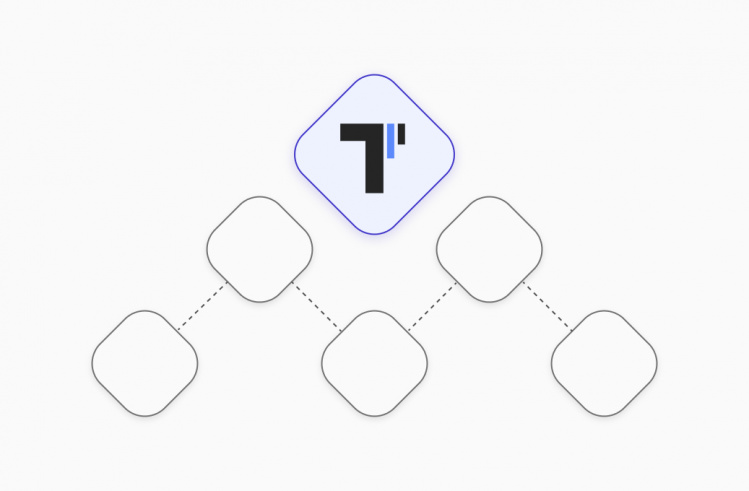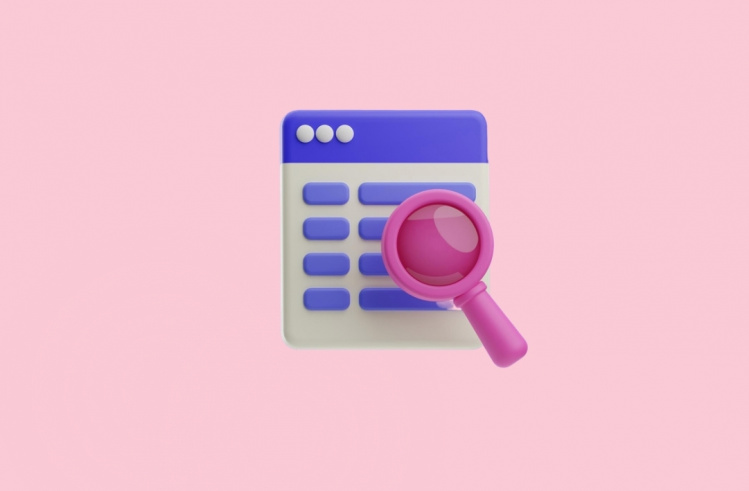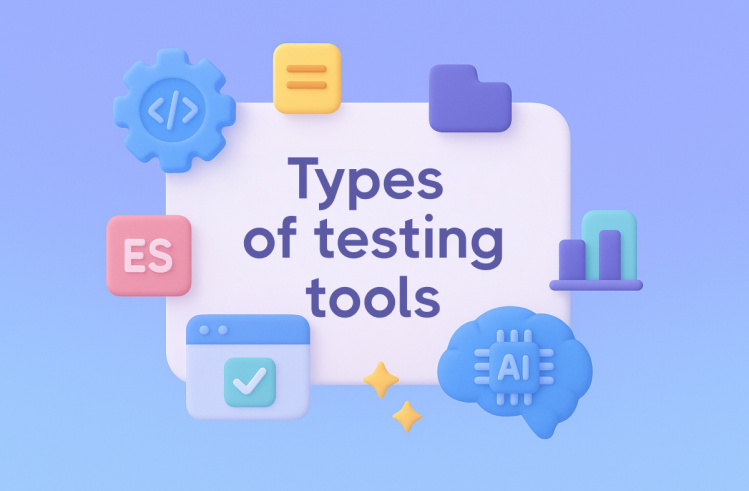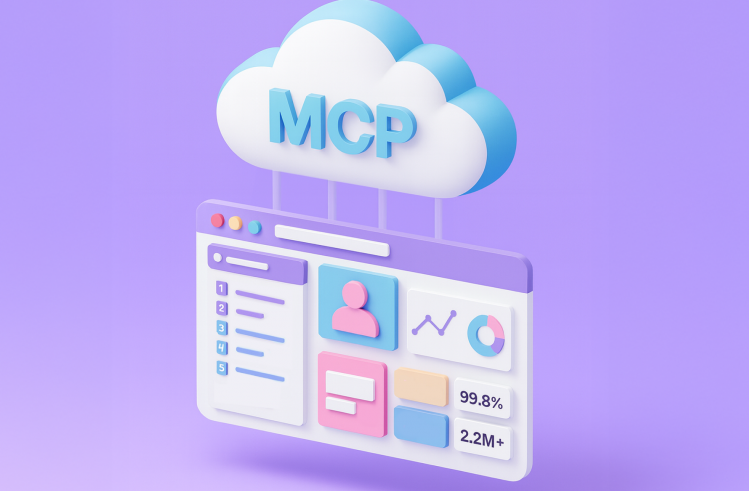Agile practices, used to develop modern digital solutions, allow changes at any stage of the software development lifecycle (SDLC). This can range from fixing bugs to adding entirely new functionality not intended by the original project requirements. Such changes can lead to breakdowns in other system components, so the software application ceases to work correctly.
⏬ You might interested in article:
To prevent critical errors, it is essential for a testing team to detect problems in the code in time, and regression testing helps them with this. So:
What is Regression testing?
Regression testing is a type of software testing that is used by QA teams to check the performance of an entire system after changes have been made to one of its components.
This type of testing is often confused with other types, such as repetitive testing. But their purpose is completely different. Let’s consider difference between retesting and regression more detail below 👀
Retesting VS Regression testing
→ Retesting is performed after fixing a detected defect.
→ Regression tests are aimed at checking the effect of changes on the functioning of an app or its components.
A code change that causes unforeseen behavior in a system is called a regression.
Types of changes, which regression testing should follow:
- Local — an error occurs exactly in the part of the code where changes are made;
- Remote — a change of one of the system components causes problems in a totally different code fragment or even in the entire system;
- Unmasked — a new code fragment does not cause but reveals a pre-existing defect that was not detected before.
Good regression testing have to detect all of these types of regressions to ensure the release of high-quality software products.
Approaches to Regression Testing
Depending on the size of your QA team and project budget, as well as the available resources, you can choose from three approaches to regression testing. They differ from each other by the scale of the work performed.
- Fully testing. It may seem that it’s easiest to re-run all the existing tests on a project after making changes to the code. On the one hand, it is true: with this approach, the probability of missing something important is minimized. On the other hand, it is a long and resource-intensive process, so full testing is not reasonable for all projects.
- Selective regression testing. This approach involves selecting certain test cases to run, which you can use to test the section of code where changes have occurred.
- Prioritized execution of test cases. This is the most complex way of regression testing, which requires certain skills, knowledge, and experience in task prioritization from QA engineers. Before run tests, the testing team outlines which of them will be able to cover all critical errors and executes them first.
In addition to the classification based on the amount of testing, regression testing types is divided into manual and performed with an automation tool. Below we will talk about which of them should be given preference.
Manual Regression Testing: Major Process Challenges
In today’s world of software development, very few QA teams still run regression test cases manually. There are more than enough reasons for this because manual testing, in this case, will have several disadvantages:
- Significant time investment. Manual tests take a long time. This fundamentally contradicts the Agile development process, which requires frequent releases of digital solutions. If each of them is accompanied by a long regression testing process, it will lead to the failure of deadlines.
- A high probability of errors. No matter how experienced a QA specialist is working on a project, conducting tests manually will always be accompanied by the human factor. This means a high probability of getting incorrect results.
- Project budget increase. Although manual testing requires almost no expensive specialized software, in the end, it will cost you more than automated testing. First, this process involves numerous various of experience testers, and when the project grows, the size of the QA team needs to increase. Second, if the test fails, you will have to fully re-run testing, which will require additional costs as time as money.
Thus, to avoid such problems, QA teams are increasingly trying to improve the overall efficiency of regression testing by automating the process ⚙️
The essence and purpose of automated regression tests are practically the same as manual regression tests. The only difference is that, in this case, all tests are performed not by a human but by various automated tools.
Executing regression testing sprints has next advantages:
- Available 24/7. Because automated regression testing is performed without human intervention, you can schedule it for any, even off-hours, and review the results as needed. This allows you to devote more time to other types of software testing.
- Reduces the time required for executing regression tests. The speed of the automation tool far exceeds human performance. This is very important, given the fact that this type of testing sometimes needs to be done on a daily basis.
- Wide test coverage. We have already found out that thanks to automation, regression testing is faster. This allows you to run test cases in a certain period in more test environments than in situations where you run regression tests manually. By test environments, we mean different combinations of browsers and operating systems.
- Reliability of results. The accuracy of automated regression tests does not cause doubts to the QA manager, which cannot be said about the results provided by manual testers. This will save you from unpleasant surprises during User Acceptance Testing or after the release of the product to the market.
- Reusability. You must carefully document and store all the regression tests in the automation tool repository. Storing all the steps of the testing workflow will allow you to use the same test cases on other projects in the future with minimal changes.
It is worth mentioning right away that using automated regression testing tools requires an initial financial investment. In the end, however, your investment will be fully recouped by optimizing the development cycle, reducing the labor costs of manual testers, and bringing a premium quality digital solution to the market.
5 Tasks How to Successfully Implement Regression Testing Automation
In order for automated testing to bear fruit in the future, QA specialists must responsibly approach each task at the stage of launching automated regression testing sessions. These tasks include:
#1: Defining the software product requirements
Before starting the testing process, it is important to understand what functionality is critical to the end user, i.e., to determine what you need to test. To do this, the regression testing automation engineer writes software testing criteria in the format of user stories – brief descriptions of system functions from the end user’s point of view.
Once written, all user stories must be ranked according to their testing priority.
There are three levels of priority:
🟥 high: the test cases are critical and must be checked first;
🟩 medium: the requirements should be met, but their verification can be postponed until a later stage of software development;
⬜ low: compliance with these test cases is desirable, but they are not critical to the performance of the entire system.
After setting the test cases to be tested, the QA team can move on to scheduling iterations. In other words, development process cycles in which the team creates and tests a particular new functionality of the software product.
#2: Choosing the best QA solution
Regression testers will have to choose a suitable regression testing tool depending on the test cases set in the previous step. Here it is important to pay attention to the compatibility of the testing management system with the principles of Agile methodology. After all, those tools that support the traditional software development approach will not help fulfill Agile team tasks.
Important aspects when choosing regression testing tools:
- Test automation capabilities. Not all tools allow you to automate the testing process. But since this is our goal, it is worth choosing among those that simplify the work on repetitive tasks.
- Access to detailed reports and advanced analytics. High-quality reports allow the development team and testers to quickly understand what the problem is and fix it.
- Integration with third party tools. Some teams don’t want to change familiar tools for others, even if they offer more capabilities in a certain area. For example, seamless integration of TMS with the Jira project management system will allow a development team to participate fully in the testing process using a familiar platform.
- Collaborative project work. Participation of all, even non-technical specialists, in work on the project is one of the priorities of modern Agile teams. Therefore, you should choose automated tools based on the extent to which they implement such a feature.
#3: Prioritizing tasks for automation
In the IT environment, priority codes are often used to determine the importance of the tasks facing the team. If we talk about regression testing, there should be automated test cases to which such codes are assigned in the first place:
🟥 P0: priority tasks which, if not performed, will cause the system to stop functioning;
🟩 P1: tasks that need to be completed to unblock the work of other specialists;
⬜ P2: current tasks with medium priority.
Once the process is complete, you can move on to automating the rest of the test scenarios.
#4: Organization of close interaction between the teams and a client
As mentioned above, regression testing is performed after a system components update: adding new functionality or fixing bugs. In order for the development team to receive timely information about the necessary changes and for the QA team to be informed about the necessity of starting regression tests, it is crucial to establish good communication between testers, developers, and a customer.
#5: Managing resources
Automation regression testing requires almost no human involvement. However, there is still a need for qualified QA engineers to write automated test scripts and experienced testers to analyze obscure test cases. It is also important to select team members who specialize in gathering requirements and writing user stories.
How to Make an Effective Regression Testing Strategy?
Parallel to the main tasks we discussed above, the QA team should think about making an intelligent regression testing strategy in overall test strategy. This is an action plan allowing to automate regression testing efficiently.
Regression testing strategy should include the following information:
- the goals of the testing process;
- the time that is planned to spend on the tests;
- resources required;
- software testing technique;
- testing environment (e.g., OS, browser);
- details of the release process;
- data on control points;
- specifics of the automated testing organization;
- distribution of responsibilities among the QA team members;
- preferred automated regression testing tools.
Creating an effective testing strategy involves several steps:
- Make sure that regression testing is really necessary. To do this, check if there is one of the reasons for doing it. Among them: adding new functionality or fixing bugs in the code that may have caused the software to malfunction.
- Start with smoke testing. Before you start regression testing, run smoke tests, i.e., test suites that help identify obvious defects. This allows you to check the stability of the assembly with minimal effort and decide whether it should be subjected to other types of testing.
- Be clear about your in/out criteria. Synchronize software testing goals and requirements to make the testing process easier.
- Prioritize tasks. Select regression test cases designed to test functionality that is critical to users and run them first.
- Automate regression testing. Recall that automated regression testing can improve test coverage, detect bugs early, speed up software release, and save time and resources.
- Add new test cases to the repository. Once you have written a new test scenario, update the information in the repository. This will simplify further work on the entire project and the next ones.
- Get feedback from the stakeholders. Share the completed regression testing strategy with the customer and other stakeholders. This is necessary to be able to make changes to it promptly if the requirements for the project change.
- Provide for running an automated regression testing package with CI\CD tools. Choose any tool that your team is used to using, and set up the desired test suites to run as often as necessary, e.g., daily.
Automated regression testing, backed by an effective testing strategy, will optimize the release process and create software to maximize customer and end-user satisfaction.
The Benefits a Regression Testing Strategy for Your Business
An effective regression testing strategy allows you to optimize the testing process, which will undoubtedly bring benefits to your business:
- Increase customer loyalty. Properly performed regression testing helps with fixing bugs in time and allows you to market digital solutions of high quality. This positively affects the level of satisfaction of your users.
- Save time and company budget. A well-thought-out strategy ensures that testing is completed as quickly as possible, meaning the product will be released to the market on time or even before the target date. In addition, identifying and fixing bugs in the early stages of development is cheaper than correcting defects after release.
- Organize an effective workflow. The testing strategy includes clearly defined roles and responsibilities for each tester. This allows teams to focus their efforts properly and get reliable test results.
A reliable regression testing strategy is one way to make testing easier and faster. Running automated tests with specialized tools also contributes to this.
Let’s find out which existing frameworks are suitable for running automated regression tests.
Regression Testing Tools to Help With Automated Testing Streamlining
In today’s market of specialized software for test automation, many solutions can be challenging to understand without proper experience. Here are five test management systems that, in our opinion, best meet the needs of Agile teams for high-quality regression testing.
Testomatio
This test management tool designed to perform manual and automated tests in the same ecosystem. Even though it is a relatively new TCMS, it has already gained popularity among QA teams due to its extensive functionality.
The system offers the following:
- convert manual test cases into automatic ones in one click;
- simplify test case writing thanks to the autocomplete steps feature;
- import test cases from other tools in CSV/XLS format;
- extensive filtering and searching tests capabilities;
- available cross-browser testing and parallel execution support;
- real-time reports that allow you to view test results without waiting until the end of the test;
- access to public reports that can be shared with stakeholders;
- reports generated at the end of a test run, with the ability to compare and group results;
- advanced analytics, including data on automation coverage, defects, Run status, test environments, Ever-Failing, Slowest, Flaky, and Never Run Tests;
- add test artifacts such as screenshots and video files to reports;
- support for integration with popular CI\CD tools: GitHub, GitLab, Jenkins, Bamboo, CircleCI;
In detail:
- seamless integration with the Jira project management system by installing a specialized plugin;
- access to test cases for all team members due to integration with the Confluence system;
- Living Docs, dynamic documentation that reflects the progress of testing and is written in a generally understandable language;
- resource management function: the ability to assign roles to the project and set access rights and tasks for each;
- extensive integration capabilities so that every team can work with a familiar tool.
Selenium
This is a portable open-source tool that is used for rapid, repeatable testing of web apps. Thanks to it, a development team can accelerate the release of a quality product to the market.
The disadvantage of the tool is that you can not use it to test the quality of mobile and desktop solutions. Also, its disadvantages include the lack of the ability to create reports on test results without the use of third-party tools.
Features of Selenium:
- support for cross-platform, multi-browser, and parallel testing;
- multilingualism: test cases can be written in JS, C#, Python, Ruby, and Java;
- reuse of test cases;
- integration with many third-party tools, including CI\CD services (e.g., Jenkins) and the Jira system.
Testigma
It is a robust regression testing automation tool that users value for its versatility. You can use it to test mobile, web apps, and API. Another essential feature of the system is that it is based on artificial intelligence technology.
Other Testigma features:
- automatic suggestion of suitable test cases after making changes in the code base;
- setting up regular test runs;
- prioritization of tests, which allows you to create optimal test suites;
- integration with CI\CD tools and the Jira project management system;
- access to detailed reports on test results.
Ranorex Studio
It is a tool that does a great job with test automation. It can work with a wide range of software, from outdated desktop solutions to advanced iOS apps.
Ranorex offers:
- reuse of successful test cases;
- testing based on keywords without writing test scripts;
- support for cross-platform, multi-browser, and parallel testing;
- access to comprehensive test summary reports in XML format with the ability to add a screenshot of a failed test;
- integration with third-party automation tools, CI\CD services, and Jira system.
Appium
It is an open-source project that allows you to automate regression tests for mobile, browser-based, and desktop digital solutions, as well as TV software. The platform is based on the Selenium toolkit and has a common problem with this framework – the lack of built-in reporting.
Appium platform capabilities:
- multi-browser testing support;
- writing test scripts in numerous programming languages, including Java, JavaScript, Python, PHP, C#, etc.;
- native, mobile, and hybrid software testing;
- parallel execution support;
- cross-platform testing with the same API: QA team can use the same code for iOS, Windows, and Android.
Final Thoughts
Automated regression testing is the process of automatically testing app functionality after making changes to the code base to fix bugs or add new features to the software. For this testing to be effective, it is essential to have a reliable regression testing strategy, follow a clear action plan for implementing automation, and select the best tool for test automation.
When choosing among all the platforms on the market, choose an option with a flexible reporting system, support for cross-platform and multi-browser testing, and extensive integration capabilities. One such solution is the testomat.io test management system. With this TMS, you can organize fruitful work on the project and quickly release a high-quality software product to the market.








